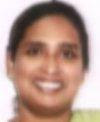Accidents Claim One Goan Every 27 Hours 4,000 People Suffered A Mishap In 2007 Drunk Driving Is The Biggest Menace
Preetu Nair | TNN
Every day last year, 11 people met with an accident on Goa’s roads. And one out of these 11 people returned home in a coffin. The figures, say traffic and transport experts, are chilling for a state that has only 6 lakh vehicles. Speed — often laced with alcohol — rules Goa’s roads and Goans pay with blood for this killing cocktail.
More than 4,000 people were involved in an accident in 2007, police statistics for the year reveal. An overwhelming majority — about two-thirds — of these 4,000 people were men in the 20-45 age group. And exactly 322 of these 4,000 people died after the accident, implying that — on an average — one Goan family lost a member every 27 hours.
But 322 deaths is only a part of the tragedy. Many of those who survive an accident can never go back to a normal life. “There are numerous complaints of accident victims undergoing a complete change of personality and suffering from quality-of-life-changing problems like lack of concentration, cognition difficulty, difficulty in walking and, sometimes, even going into a permanent vegetative state or suffering a paralytic attack. It is a loss to the family, the society and the state,” Goa Medical College dean neurosurgeon V N Jindal said.
Mishaps are often fatal or crippling primarily because most of them are head-on collisions or involve overturning of vehicles. The number of two-wheelers involved in head-on collisions in 2007 was 817; the figure was 770 for four-wheelers. “Head-on collisions very often mean head injuries suffered when vehicles move at a high velocity. That explains the high number of crippling injuries and deaths,” Jindal explained.
Many of these accidents occur, not surprisingly, on Goa’s national and state highways which give drivers an opportunity to step on the accelerator. National highways form about 6 per cent of Goa’s road network but they contribute heavily to the number of head-on collisions and vehicles turning turtle. State highways, too, despite contributing only 5 per cent to the road network, account for 11 per cent of all accidents in the state. And nearly 71 per cent of the accidents occur during the day, especially between 6 am and 7 pm, on Sundays and Mondays.
But even all these numbing figures may not tell the entire story, say experts on road safety and traffic laws. “Four out of 10 accidents every day go unreported. And the statistics may not include all the victims who die after being discharged from hospital,” Movement for Amity towards Roads in Goa (MARG) member Gurudas Juwarker said.
Experts also do not believe that the growing number of vehicles jostling for space has anything to do with the blood on the roads. Goa has 4,983 km of roads, Bangalore 4,500 km. But Goa has fewer than 6 lakh vehicles; Bangalore has 30 lakh.
What accounts for most accidents, experts believe, are the twin menaces of irresponsible driving and drunk driving. Traffic cops have 30 breath-analysers that can sniff out whether a person is driving under the influence of alcohol. Many violate the permissible blood-alcohol limit of 30 milligrams per decilitre of of blood (for light vehicles). “Everyone knows someone influential in Goa and it is very difficult to keep a check on drunk driving,” a senior traffic police official admitted on condition of anonymity. It, therefore, comes as no surprise that only 133 people were booked by traffic cops for mixing driving with drinking last year.
TOI CALLED UP TWO PRIVATE HOSPITALS, INFORMING THEM OF AN “ACCIDENT”, TO GAUGE THEIR RESPONSE CASE I: THE BAD
TOI: I’m calling from the highway near Peddem. There’s a man who has been injured in an accident. Can we bring him to the hospital? HOSPITAL: Yes, bring him here. TOI: He seems to be quite poor. I wanted to check if we could bring in. HOSPITAL: Hold on please.... (Seconds later) Talk to the doctor. HOSPITAL (DOCTOR): Hello. TOI: A man has been knocked down in a hit-andrun accident and looks like he may not have too much money. Should I bring him to your hospital? HOSPITAL (DOCTOR): I would advise you to take him to a government medical facility. Where are you? TOI: Am on the highway, somewhere near Hotel Preeti International. HOSPITAL (DOCTOR): How bad is he? TOI: He seems to be in quite a bad condition. Please tell us what to do! HOSPITAL (DOCTOR): There’s a government hospital nearby; the Asilo is just a kilometre away from where you are.
— Andrew Pereira | TNN
CASE II: THE GOOD
TOI: I’m calling from St Inez. There’s a man who has been injured in an accident. Can we bring him to the hospital? HOSPITAL: Yes, bring him to the casualty ward. TOI: He seems to be from a poor background. I wanted to check if we could bring him in. HOSPITAL: Hold on.... (Seconds later) Are you involved in the accident? TOI: No, he’s been lying on the road, it’s a hit-and-run case. HOSPITAL: Please hold on.... (Seconds later) Yes, bring him in.
BLOOD ON THE ROAD 2003: 235 2004: 306 2005: 270 2006: 303 2007: 322
2008 May 14 Times Of India Goa
Subscribe to:
Post Comments (Atom)







No comments:
Post a Comment